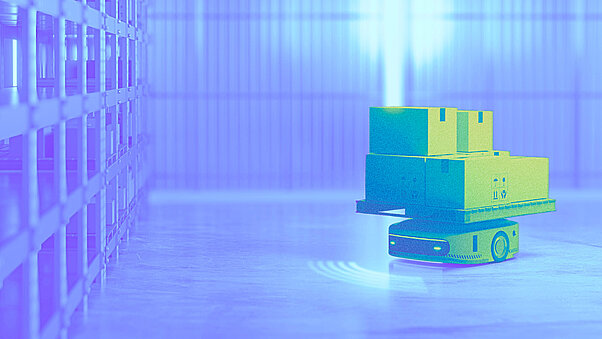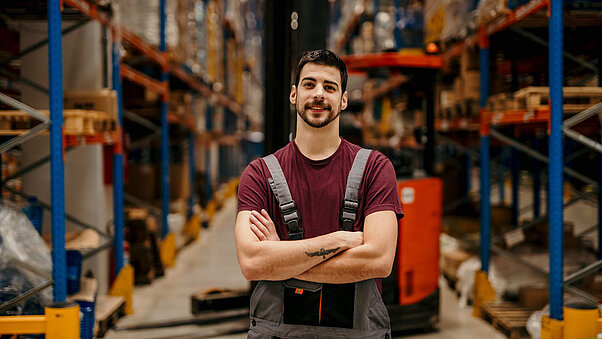Green logistics: How logistics can become more sustainable

There's no doubt about it - the logistics industry definitely has an impact on the environment. Where there's packing and shipping, there's energy usage, and a lot of that energy is still coming from fossil fuels.
As a fulfillment provider, we're a link in the logistics chain, and we rely on transportation - without which, our world would come to a standstill. So how can we talk about sustainability? Because there's a lot that the logistics industry can do to become more sustainable. We're already making strides every day because we're acutely aware of our responsibility.
Read on to find out all about green logistics and the steps we and our shipping partners are taking to minimize CO2 emissions!
- What does Green Logistics mean?
- How sustainable logistics can succeed
- The controversial concept of climate-neutral shipping
What does green logistics really mean?
- First things first: An industry that relies on vehicles that emit carbon dioxide cannot be considered sustainable per se.
You have to be very careful not to engage in greenwashing - we certainly don't want to do that! Instead, we want to clarify what green logistics really means and how green logistics should be understood at best.
- Green Logistics means to start at every logistic step to reduce the environmental impact of the industry as far as it works. From the transportation of goods, to the storage and picking of products, as well as the choice of our shipping partners who are committed to carbon neutrality. You can also find out what that means in this article. Especially in one of our core activities, the packaging of products, we have always paid attention to the use of recyclable material from regional manufacturers.
As a logistics service provider, there are various ways to conserve resources and operate in a much more sustainable manner.
- Green Logistics, on the other hand, does not mean that a logistics company can operate without CO2 emissions or effectively offset them through environmental projects. A clear distinction must be made between the terms "sustainability" and "more sustainable".
First and foremost, we want to make our warehouse processes more sustainable:
- Our in-house developed logistics management tool, the Logsta Connector is completely designed for efficiency. The warehouse space in our 8 own fulfillment centers is used in such a way that our employees have to walk as short distances as possible. Picking takes place on-the-go: The Connector automatically finds the best route through the warehouse to pick goods as efficiently as possible and avoid unnecessary routes and empty runs.
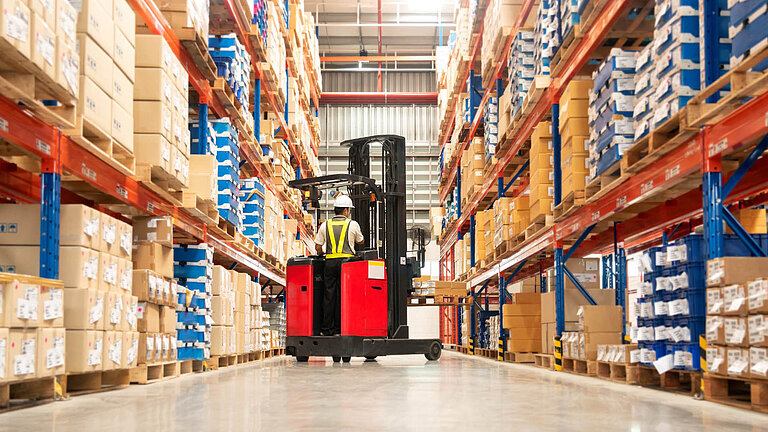

- Buildings also significantly contribute to greenhouse gas emissions. Our latest fulfillment center in Enzersdorf an der Fischa, Austria, exemplifies these modern warehouses where sustainability considerations were factored in right from the construction phase.
The German Sustainable Building Council, a non-profit organization (DGNB), recognized this warehouse with its Gold Standard. The DGNB certification process involves a thorough examination of numerous aspects of a building, assessing whether resources were preserved and environmental considerations tackled through strategic measures.
These are, for example:
- High-quality materials and future-oriented building structure planned for the long term.
- Use of modern lighting such as LEDs, which last longer and consume less energy
- Efficient heating and cooling systems - climatically separated zones and high-quality building insulation
- Cooperation with sustainable energy suppliers
- Use of solar energy systems
Holders of this certification include companies such as AUDI, REWE Group, Deutsche Bank, BASF, and many more!
Examples of sustainable logistics: Here's how it can succeed
Because they are carried out thousands of times a day, all processes in a sustainable fulfillment center really add up. The goal is to create ecologically-efficient structures and minimize unnecessary environmental impact wherever possible.
It's the little things that matter - a few examples of "greener logistics" include:
- Electronic dispatch of invoices, which saves vast amounts of paper.
- Digital inventory management and picking in our warehouses: Everything is done digitally via scanner - paperwork is a thing of the past.
Where fulfillment providers can make another big contribution to sustainability in logistics is the shipping boxes and packages, thousands and thousands of which we send out every day.
We try to go as plastic-free as possible and only use paper-based filling material for packaging, which is completely biodegradable; plastics are taboo here. In addition, we work with local manufacturers for our cardboard boxes, which are produced regionally and are only a short distance from our warehouses. Nothing has to be shipped from far away, which helps to improve the CO2 balance.
Another great example of one of our partners is Arka: This US-based company focuses on sustainable packaging solutions, offering recyclable and biodegradable materials. By prioritizing local sourcing and reducing waste, Arka demonstrates how businesses can contribute to a more environmentally friendly future.
- Discover this unique company here.
Climate neutral shipping and what it means
Take a look around - everything you see had to be made somewhere and transported here. Whether it's the food in your fridge, your daily necessities, or various items from online shops. The vehicles moving our goods from point A to point B largely still run on fossil fuels - that's a tough reality to change. Delivery services play a crucial role in this scenario.
All the shipping service providers we collaborate with, offer strategies to minimize CO2 emissions and invest globally in environmental protection programs. This way, they calculate how much CO2 can theoretically be offset, say, by planting trees all around the world - leading to the buzzword "carbon neutrality". It's definitely a sensible and significant step towards becoming more sustainable.
- "Carbon neutral" refers specifically to the balance between emitting carbon (and other greenhouse gases) and absorbing or offsetting carbon, often through measures like planting trees or investing in renewable energy.
- "Climate neutral," on the other hand, is a broader term that refers to the balance between all activities that can contribute to climate change, not just carbon emissions. This can include other factors like water usage, waste production, land use changes, and more.
However, this doesn't mean that it all works exactly as planned, or that the CO2 load is truly balanced out. Numerous studies indicate that while these projects do have a positive impact on our climate, they are often perceived as more environmentally friendly than they really are. In the end, true sustainable logistics only exists if it emits no CO2 from the outset - which, for the time being and for the foreseeable future, is not feasible.
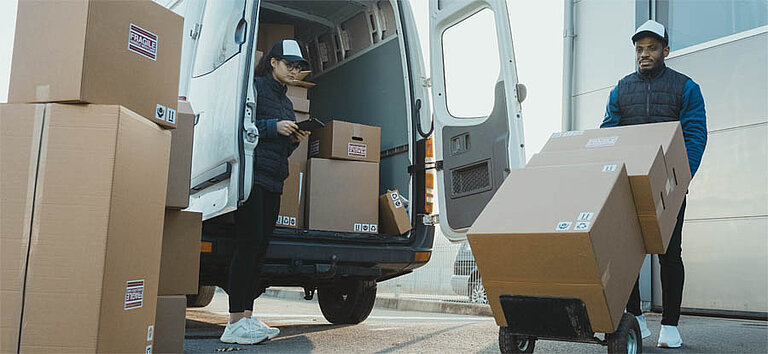



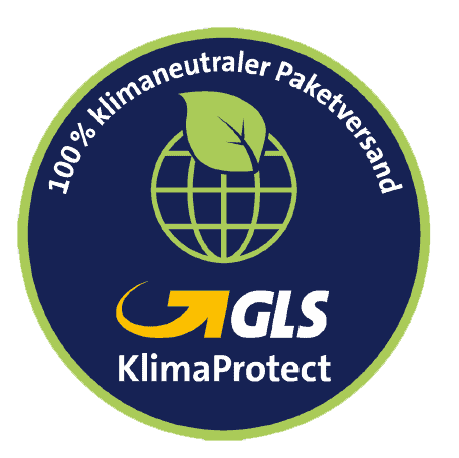
The ultimate goal for all shipping services is to achieve completely climate-neutral shipping in the long run.
This means they measure the environmental impact of the packages and subsequently invest funds into projects that promote clean energy or tree planting, aimed at reducing this impact. These are substantial projects striving to at least achieve an ecological balance. Most of our shipping partners have been doing this for some time now, and it's not costing their customers an extra dime.
These are the measures taken by various shipping services in the U.S. to limit their CO2 emissions:
- Fleet Electrification: Many companies, including UPS and FedEx, are gradually transitioning their vehicle fleets to electric or hybrid models to reduce carbon emissions.
- Carbon Offset Programs: Some shipping companies offer carbon offset programs where they calculate the emissions generated by their services and invest in projects that reduce or sequester an equivalent amount of greenhouse gases.
- Efficiency Improvements: Companies are continually improving their logistics and delivery networks to reduce unnecessary travel and increase the efficiency of their operations, thus saving fuel and reducing emissions.
- Renewable Energy Use: Some companies are turning to renewable energy sources, like solar or wind power, for their facilities to reduce their carbon footprint.
- Recycling and Waste Reduction: Many companies are making efforts to reduce waste and increase recycling in their operations, including using recycled or environmentally friendly materials for packaging.
- Sustainable Building Design: Companies are also incorporating green building designs into their warehouses and facilities, which can reduce energy usage and improve sustainability.
In Germany, we send most of our parcels with DHL. With its GoGreen program, DHL offsets the necessary greenhouse gasses by investing in various climate protection projects. In this way, Deutsche Post & DHL takes direct responsibility for the environmental pollution that has occurred. By 2050, our shipping partner aims to reduce all logistics-related emissions to zero through comprehensive sustainability programs.
We are all in the same boat, living on a planet with finite resources that we need to preserve. It doesn't start and end with sustainable logistics or climate neutrality - no one can run away from responsibility. Everyone can do something and every contribution has a positive impact on the environment.
- Do you have questions about green logistics? Just send them to us.
We look forward to your feedback.
Sources
Page: CO2 neutrality in Austria
URL: www.post.at
Page: DGNB certification: For demonstrably better buildings and quarters
Page: German Sustainable Building Council
URL: de.wikipedia.org
Data and Sources from the UK: Royal Mail Website
Pictures:
pexels
pixabay
Logsta / Quivo © 2023



